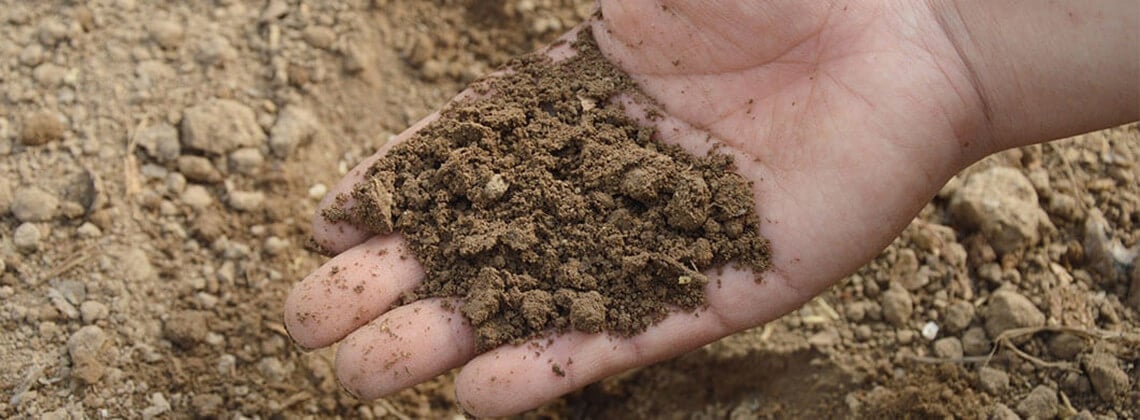Certified Material Testing Products offers quality materials testing equipment for those who need it. Whether you’re in the construction business or you’re simply a handyman, we have materials testing equipment that’s affordable and just right for you. However, we don’t mind giving some other advice and tips for those who just want to know how to test soil themselves without equipment. We believe it’s useful information to have.
1. You can test what type of soil you have, take some in your hand. If it holds its shape but crumbles when you poke it, you have loam! This is considered ideal soil. If it holds its shape in your hand and when you poke it, you have clay. If the soil falls apart as soon as you open your hand, you have sandy soil.
2. The percolation test determines whether your soil has problems draining. Dig a hole about 6 inches wide and a foot deep. Then, fill it with water and let it drain and fill it up again. Keep track of how long it takes this water to drain and if it takes longer than 4 hours, you have a drainage problem.
Keep Reading: Have the Right Materials Testing Equipment.
3. You can perform the worm test to see how healthy your soil is. Your soil must be at least 55 degrees and relatively moist but not too wet. Then, dig a hole one foot wide and one foot deep and place the soil on some tarp or cardboard. Sift through the soil, counting the earthworms as you place the soil back into the hole. If you have at least 10 earthworms, your soil is good and healthy.
If you need to purchase any material testing equipment to replace or add to your lab supplies, shop at Certified Materials Testing Products for your one stop shop for all your testing products. We have the knowledge and equipment to back you up, when you need it most. Start shopping online with us today and find exactly what you are looking for. Contact us now to have any of your questions or concerns answered
Material Testing: A Comprehensive Overview
Material testing is an essential process in the manufacturing, construction, and research sectors, focusing on analyzing material properties under various conditions. This 800-word overview covers the importance, types, applications, and challenges of materials testing.
1. Importance of Materials Testing
Materials testing is crucial for several reasons:
– Quality Assurance: Ensures that materials meet specific quality and safety standards, crucial for the final product’s performance and durability.
– Compliance with Regulations: Helps manufacturers and builders comply with local and international safety and quality regulations.
– Research and Development: Aids in the development of new materials and the improvement of existing ones.
– Prevention of Material Failure: Identifies potential issues that could lead to material failure, thus preventing accidents and costly repairs.
2. Types of Material Testing
a. Mechanical Testing: Assesses properties like strength, ductility, hardness, and elasticity. Includes tensile, compression, and impact tests.
b. Thermal Testing: Evaluates material behavior under various temperature conditions, using tests like thermal conductivity, expansion, and resistance.
c. Chemical Analysis: Determines the chemical composition of materials, important for ensuring material purity and understanding corrosion mechanisms.
d. Environmental Testing: Simulates environmental conditions (like humidity, and UV exposure) to assess material durability and life span.
e. Non-Destructive Testing (NDT): Inspects materials without altering or damaging them, using methods like ultrasonic, radiographic, and magnetic particle testing.
More Read: Humboldtmfg Construction Materials Testing Equipment.
3. Material Testing in Various Industries
– Construction: Testing of concrete, steel, and other building materials for strength and durability.
– Aerospace and Automotive: High-precision testing of components to withstand extreme conditions.
– Electronics: Testing of materials for electrical conductivity, thermal properties, and reliability.
– Medical Devices: Ensuring that materials used in medical equipment are safe and meet stringent regulatory standards.
4. Testing Standards and Protocols
– Adherence to international standards like ASTM, ISO, and EN is crucial for global trade and industry compliance.
– Specific industries have their own set of standards and testing protocols.
5. Sampling and Preparation
– Accurate sampling methods are vital for representative results.
– Preparation of samples, often involving cutting, polishing, or conditioning, is crucial for accurate testing.
6. Technological Advancements in Materials Testing
– Digitalization and automation have led to more efficient and accurate testing processes.
– Advances in sensor technology and data analysis tools allow for deeper insights into material behavior.
7. Challenges in Materials Testing
– Testing advanced and composite materials requires sophisticated techniques and equipment.
– Environmental factors, such as sustainability and recycling, pose new challenges in materials testing.
– Keeping up with rapidly evolving technology and industry standards.
8. Environmental and Sustainability Considerations
– Increasing focus on testing materials for environmental impact and sustainability.
– Development of eco-friendly testing methods and standards.
9. Quality Control and Assurance
– Materials testing is integral to quality control in manufacturing and construction processes.
– Helps in identifying defects early in the production process, reducing waste and cost.
10. Training and Expertise Required
– Skilled technicians and engineers are needed to conduct and interpret tests accurately.
– Continuous training is essential to stay updated with the latest testing methods and technologies.
11. Cost Implications
– While materials testing can be costly, it is crucial for preventing more significant expenses associated with material failure.
– Investment in quality testing equipment and personnel ensures long-term savings and product reliability.
12. Future Trends in Materials Testing
– Integration of artificial intelligence and machine learning for predictive materials analysis.
– Miniaturization of testing equipment for in-field and on-the-go testing capabilities.
Conclusion
Materials testing is a critical component in ensuring the safety, quality, and performance of materials used in various industries. From mechanical and thermal testing to chemical analysis and environmental simulation, materials testing encompasses a wide range of techniques and methodologies. As industries continue to evolve, so does the field of materials testing, with advancements in technology leading to more efficient, accurate, and comprehensive testing methods. The importance of materials testing in maintaining industry standards, complying with regulations, and fostering innovation cannot be overstated. It remains a dynamic and essential field, integral to the advancement of modern manufacturing, construction, and research.

